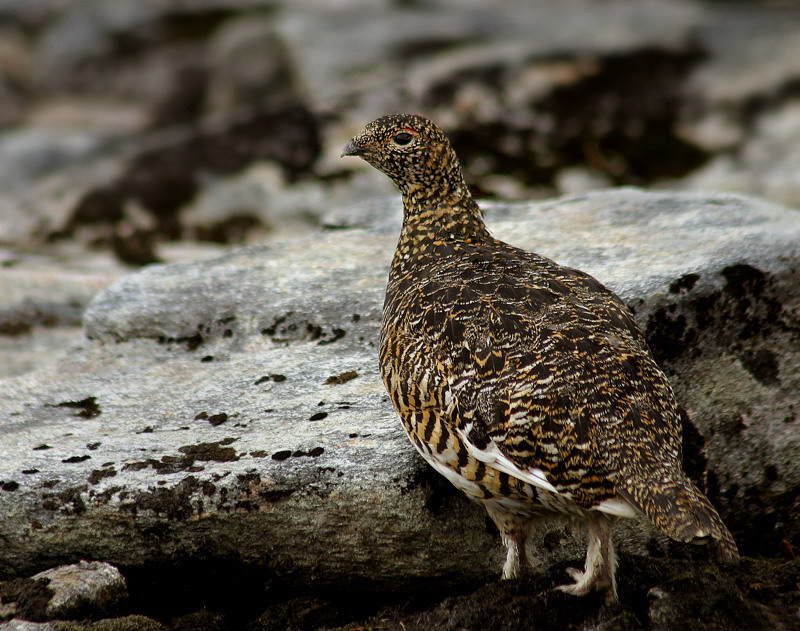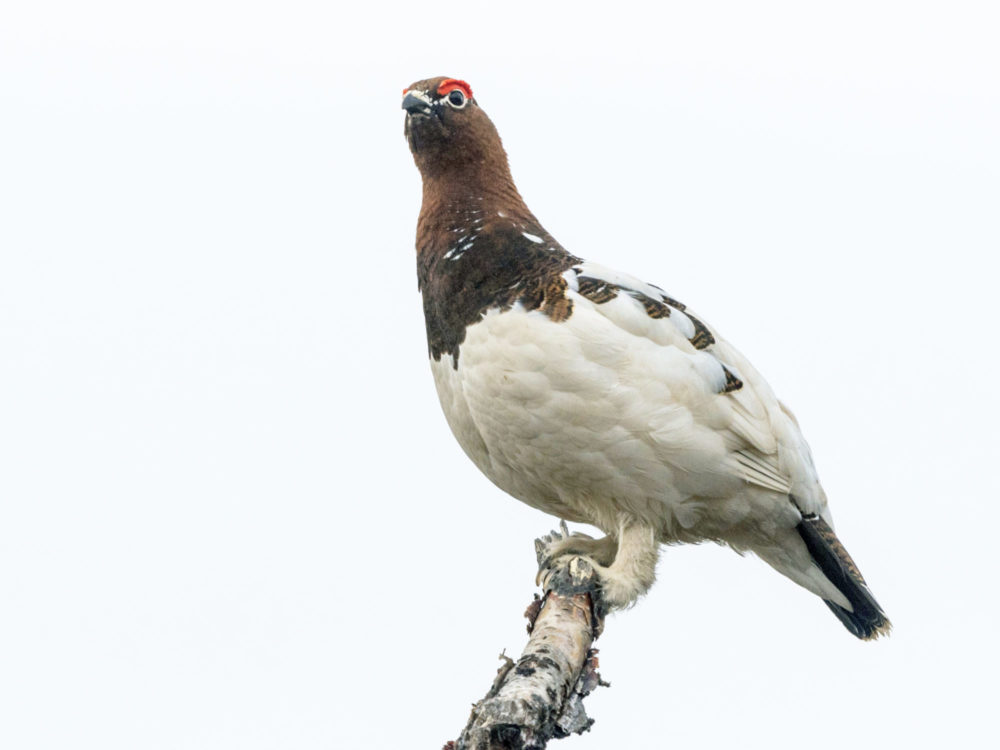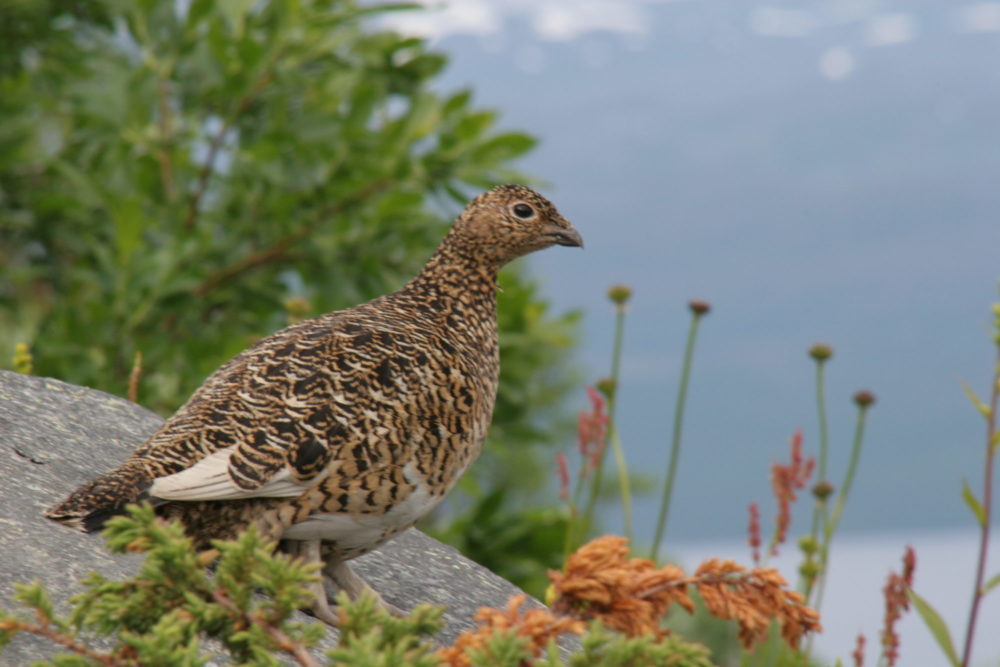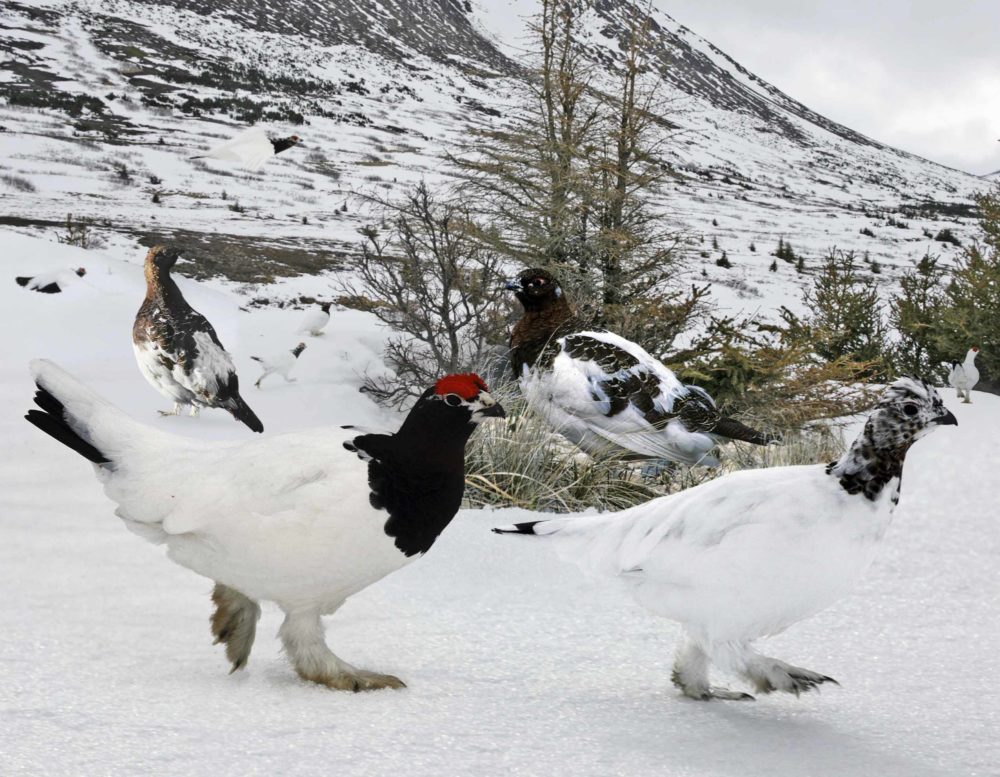Willow ptarmigan
There are few sounds that create a sense of the mountain world as much as when the willow ptarmigan cock embarks on his spring courtship, or flaps shrieking out of mountain birch scrub when a hiker comes too close! The willow ptarmigan is one of our two ptarmigan species and closely related to the slightly smaller rock ptarmigan. The male ptarmigan is called a cock, while the female is a hen.
Willow ptarmigan facts
Latin: Lagopus lagopus
Family: Pheasant family (Phasianidae)
Length: 40 cm
Wingspan: 55 – 66 cm
Weight: 450 – 750 gram
Breeding season: May – June
Number of young: 9 – 14
Photo: Perhols / CC BY-SA

How does the willow ptarmigan live?
In the spring snow in the mountains, you can often hear the male ptarmigan (cock) cackling and rattling on wooded or grassy mountainsides. This means that breeding season is approaching and the male ptarmigans are claiming territories in order to attract female ptarmigans (hens). If breeding is successful, the ptarmigan will lay eggs. The nest sits on the ground, which is hardly surprising seeing as that is where ptarmigans spend most of their time. They have adapted to living in the mountains without trees to sit in. When the ptarmigan chicks hatch, they will stay with the parents. Both mother and father help to raise them. If you meet a brood of ptarmigan chicks in the early summer, the parents will usually put on an act to draw your attention away from their young. They cackle and make a racket, and draw their wings back to make it look as if they are injured. This is an effective diversionary tactic that can save the lives of their little chicks when predators are on the prowl.
Another tactic employed by the ptarmigan to avoid predators is camouflage. It’s plumage is motley brown in summer and very difficult to spot as long as the ptarmigan stays still. In winter, it’s plumage changes colour, becoming white. Good camouflage means that the ptarmigan usually relies on staying as quiet as a mouse in the hope of not being discovered. This defence works well in the case of birds of prey, which hunt by watching from the sky, but is not, perhaps, quite so effective when it comes to predatory mammals, which use their sense of smell more. If they come too close, the ptarmigan will be ‘flushed out’ and fly off.
In late autumn, the ptarmigan broods will disperse. The ptarmigan will then often gather in large ptarmigan flocks. When ptarmigan do this, we say they are congregating.
As the winter weather can be difficult, the ptarmigan has a method for avoiding bad wind and weather: it burrows into the snow, making what is called a snow roost. Burrowing like this means that the ptarmigan is less exposed to bad weather and better able to stay warm.
Photo: Hans Norelius / CC BY

What does the willow ptarmigan eat?
The willow ptarmigan starts it’s life as a chick eating insects. Gradually, as it grows, it will switch to a plant-based diet. From now on, it will live on buds, seeds, heather and berries.
Photo: David Mintz / CC BY-SA

Where does the willow ptarmigan live?
In Norway, the willow ptarmigan mainly lives in the mountains, from the tree line up onto mountainsides where there is vegetation to graze on.
In some places, it can also be found down in the mountain forests, particularly from Trøndelag northwards. We also have ptarmigan on some islands, including Smøla. The ptarmigans on Smøla do not change colour during the year. This is an adaptation to living in an environment where snow does not settle. It would be inconvenient to be completely white when the ground is brown.
